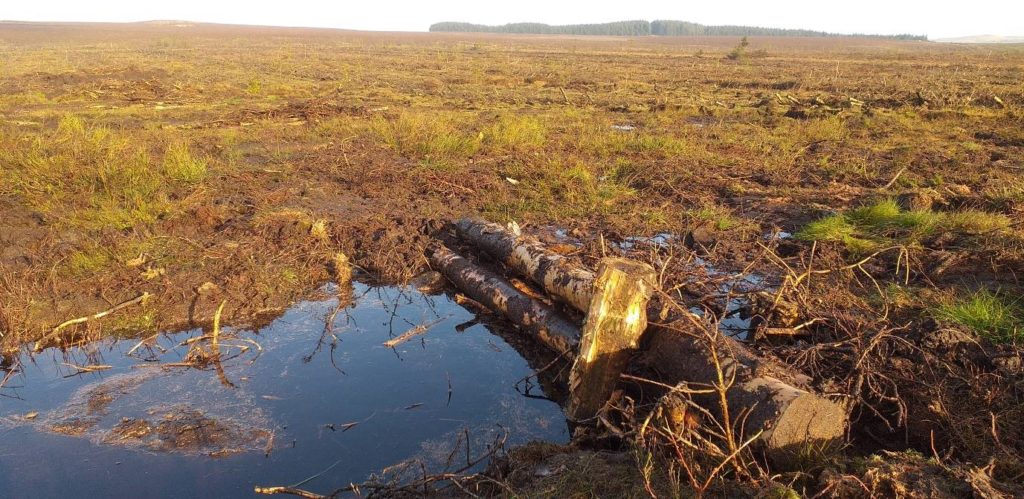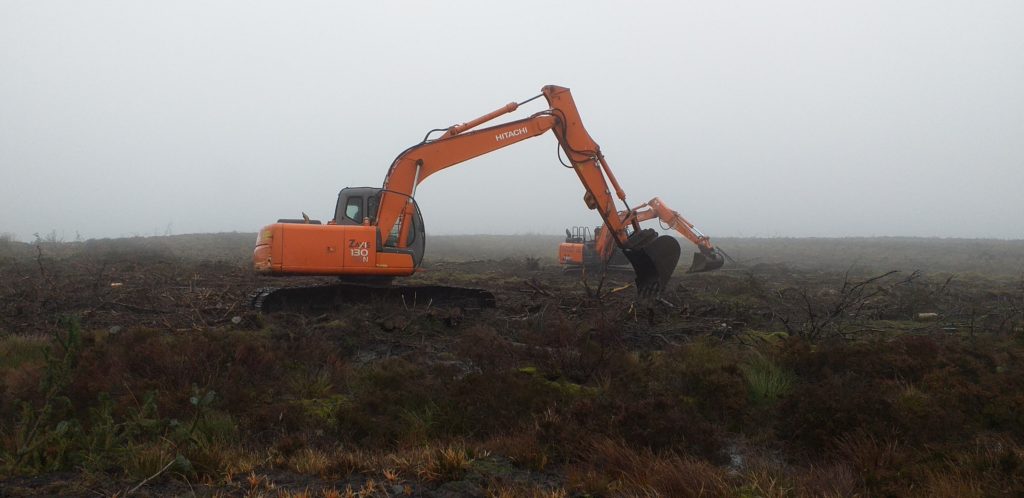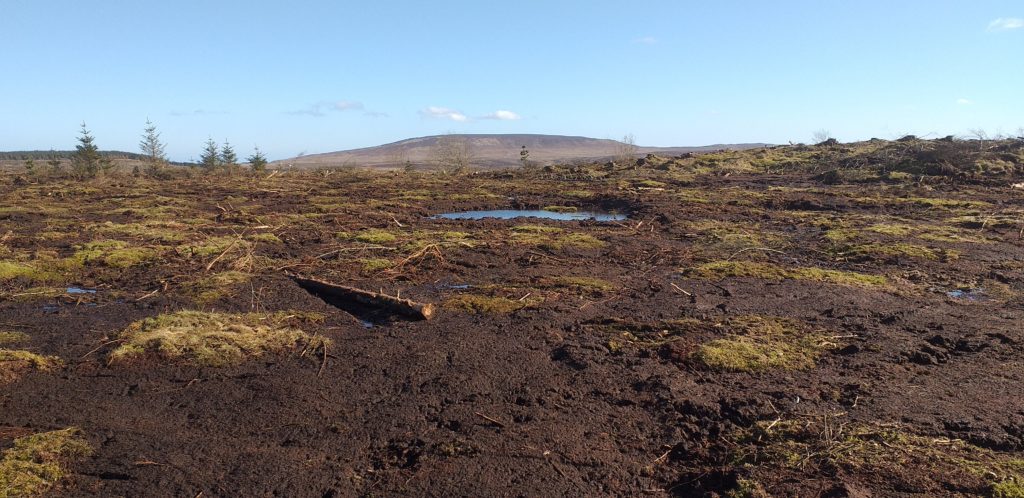Upland Peatland Projects at CAFRE
Peatlands are very important wetland sites to NI as provide a range of ecosystem services to the population. In addition to food provision and biodiversity they hold vast quantities of carbon, are the origin of many our watercourses and act as the catchments for most of our drinking water. Over 70% of all drinking water in the UK & Ireland is derived from peatland catchments. In a world context this is unusual, with 85% of all global drinking water sourced from peatlands being within the British Isles. CAFRE peatland projects are focusing on sympathetic grazing and habitat management to maintain the carbon store, preserve biodiversity, prevent wildfire, provide clean drinking water and assist with flood alleviation.
Forest to Bog
CAFRE has three Forest to Bog projects within the 1040 hectare CAFRE Hill Farm at Glenwherry. The main site is 57 hectares of deep peat at the top of Creeve hill. This site was previously afforested in 1982 and harvested in the winter of 2019. The forest crop of Sitka Spruce and Lodgepole Pine was established with a standard 1 metre plough depth leaving a secondary ridge and furrow drainage system draining to 2 metre deep main drains spaced every 50 metres. The decision not to replant was based upon the biodiversity gains particularly for ground nesting birds envisaged by the Glenwherry Hill Regeneration Partnership.
Restoration works commenced in February 2020 with an initial one hectare pilot study. The area is within a Special Protected Area (SPA) for Hen Harrier and Merlin restricting engineering works to the months of September – February. Two forestry compartments totalling 18 hectares were restored during the winter of 2020 demonstrating a range of methods of stump flipping, ground smoothing, peat dams, drain blocking, cell bunding, contour bunding and focal point depressions.
The faster the site can re-vegetate the quicker the ecosystem benefits of the restoration project can be realised. As a result of bare peat sections arising in the small pilot project a process of replacing vegetation turves throughout the engineering process in the main project was widely used across the site. Hand sowing of sphagnum mosses, cotton grass and nurse crop grasses has also been demonstrated on various sections to determine the additionality value of re-vegetation methods to natural re-colonisation.
Along with an additional 150 hectares of open moorland the Creeve Forest to Bog project drains to one of the local Killylane reservoir abstraction points. This reservoir serves 60,000 people within the Ballymena, Ballyclare and Larne areas. Working in partnership with QUB and NIW, data is being collected to demonstrate the financial and physical value of peatland restoration on a severely drained peatland site both to water quality and flood alleviation.
IUCN Peatland emissions data for such intensively drained blanket bog sites has a reference value of 9.91t CO2 equivalent emission per hectare per year. The restoration of the 57hectares to peat accumulating condition (PAC) will significantly contribute to the CAFRE net zero greenhouse gas target.
A smaller forest to bog project on a 5 hectare site of partially deep and partially cut-over shallow peat has also been completed in the winter of 2020 with a further shallow peat 2 hectare site at W Wood under consideration for 2022. All the sites have a range of slopes across several areas and the peat depth and slope dictates the range of methods which can be used to permanently raise the water levels. Water table monitoring using piezometers and dip wells has been ongoing since 2019 and at June 2021 target water table depths of 10-20cm below surface level were being successfully recorded in restored areas.



